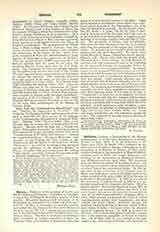

Gerbert, MARTIN, Prince-Abbot of Saint-Blaise, liturgist and musical writer; b. at Horb-on-the-Neckar, in the Black Forest, August 12, 1720, by birth being entitled Baron von Hornau; d. in his monastery of Saint-Blaise, May 13, 1793. He studied the humanities successively at Ehingen, Suabia, at Freiburgiln-Breisgau and at Klingenau, and philosophy and theology at the Abbey of Saint-Blaise, whose prince-abbot remarked his talents and undertook the direction of his studies, having in mind to make him his successor. Having entered at Saint-Blaise in 1736, he was ordained priest in 1744, and was almost immediately appointed professor of philosophy and theology. Besides, he fulfilled the duties of librarian. His first researches in liturgy and music date from this time. In 1760, in the course of a sojourn in France and Italy, he made the acquaintance at Bologna of Martini, who was collecting materials for his “Histoire generale de la musique” and to whom he made known his own discoveries. Gerbert states that he was much surprised to learn of the existence of so extensive a literature on a special subject, but that his own studies led to the knowledge of many other works which he made known to Martini, with whom he kept up a correspondence.
In 1762 Gerbert announced through a prospectus his intention of writing a history of church music, and he labored unceasingly at this task, despite the cares imposed upon him by the administration of the Abbey of Saint-Blaise, of which he was named prince-abbot in 1764. The first volume was completed and the second much advanced when a fire destroyed the church, the library and a part of the manuscripts of Saint-Blaise (1768). Gerbert set to work once more, and the work appeared in 1774. The researches made necessary by the preparation had brought about the discovery of a number of manuscripts of the Middle Ages. Gerbert published more than forty of them in his “Scriptores de musica” (1784). Between whiles he published various writings, some of which are still of real importance, such as the “Iter Alemannicum”,—in which, like Mabillon, Montfaucon, and Martene, he shares with us the treasures he has discovered in the libraries of Germany, France, and Italy—and useful works on Rudolph I and the house of Hapsburg, on the history of Sweden, and on the ancient liturgy of Germany.
List of works: “Martini Gerberti et Remigii Kleesati XXIV Offertoria Solemnia in festis Domini, B. V. M. et SS. opus I” (in fol. Augsburg, 1747); Apparatus ad eruditionem theologicam (Saint-Blaise), 1754; Iter Alemannicum, accedit Italicum et Gallicum (8°, Saint-Blaise, 1765); “Pinacotheca principum Austriae” (1768); “Codex epistolaris Rudolphi I Romanorum regis” (Saint-Blaise, 1772); “De Cantu et Musica Saera a prima ecclesiae tate usque ad praesens ternpus” (2 vols. 4°, Saint-Blaise, 1774); “Taphographia principum Austrian, monumentorum domus Austriaca tomus IV et ultimus” (2 vols. in fol., 1772); “Vetus liturgia Alemannica, disquisionibus praeviis, notis et observationibus illustrata” (2 vols. 4°, Saint-Blaise, 1776); “Monumenta veteris liturgiae Alemannicae ex antiquis manuscriptis codicibus” (2 vols. 4°, Saint-Blaise, 1777-79); “Historia Silvae Nigrae” (3 vols. 4°, 1783); “Scriptores ecclesiastici de musica sacra” (3 vols. 4°, Saint-Blaise, 1784); “De Rudolpho suevico comite de Rhinfelden, duce, rege, deque ejus inlustri familia” (4°, Saint-Blaise, 1785); “Observationes in Bertholdi seu Bernoldi, Constantiniensis presbyteri opuscula” (in the “Mon. res Aleman. illust.” of Uffermann, 2 vols., 1792); “De sublimi in evangelio Christi juxta divinam Verbi incarnati aeconomiam (8°, 1793).
H. LECLERCQ

